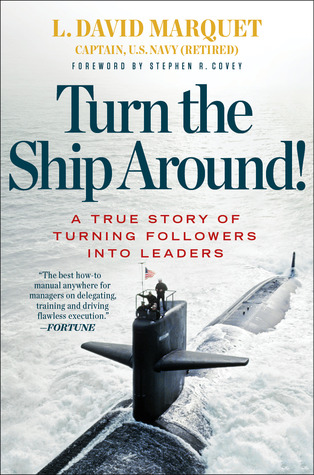More on this book
Community
Kindle Notes & Highlights
Read between
June 9 - June 10, 2024
Our world’s bright future will be built by people who have discovered that leadership is the enabling art. It is the art of releasing human talent and potential.
Leadership is communicating to people their worth and potential so clearly that they are inspired to see it in themselves.
I went back to leading in the way I’d been taught. I personally briefed every event. I approved all decisions myself. I set up systems where reports came to me all day and all night. I never slept well because messengers were waking me so I could make decisions. I was exhausted and miserable; the men in the department weren’t happy either, but they stoically went about their jobs. I prevented any more major problems, but everything hinged on me.
I didn’t respond well to executing a bunch of tasks. In fact, being treated that way irritated me and caused me to shut my brain down.
Essentially, what I had been trying to achieve on Will Rogers was to run an empowerment program within a leader-follower structure.
We didn’t associate an officer’s leadership effectiveness with how often his people got promoted two, three, or four years hence. We didn’t even track that kind of information. All that mattered was performance in the moment.
It is precisely the success of the top-down, leader-follower structure that makes it so appealing. As long as you are measuring performance over just the short run, it can be effective. Officers are rewarded for being indispensable, for being missed after they depart. When the performance of a unit goes down after an officer leaves, it is taken as a sign that he was a good leader, not that he was ineffective in training his people properly.
Thus, as I pointed out earlier, each CO is encouraged to maximize performance for his tour and his tour alone. There is no incentive or reward for developing mechanisms that enable excellence beyond your immediate tour. Imagine the impact of this on the thousands of decisions made by the commanding officers throughout the Navy.
Sadly, a common joke on Santa Fe was “Your reward is no punishment.”
ACHIEVE EXCELLENCE, DON’T JUST AVOID ERRORS is a mechanism for CLARITY.
“Don’t move information to authority, move authority to the information.”
“Show me what you are working on,”
I intend to . . . I plan on . . . I will . . . We will . .
Resist the Urge to Provide Solutions
RESIST THE URGE TO PROVIDE SOLUTIONS is a mechanism for CONTROL.
“I’ve been having a problem with this. What have you seen other ships do to solve it?” Most inspection teams found this attitude remarkable.
Embrace the inspectors can be viewed as a mechanism to enhance competence, but I think it fits even better in the discussion of control because it allowed us not only to be better submariners but also to maintain control of our destiny.
The training program is a part of the learning process, but by no means all of it. Training is a subset of learning, which in turn is a subset of personal growth. We strive to grow each day.
I learned that even in casualties (emergencies), releasing control yields better results.
Mechanism: Specify Goals, Not Methods
SPECIFYING GOALS, NOT METHODS is a mechanism for COMPETENCE.
Achieve excellence, don’t just avoid errors (this was introduced in chapter 7).
Begin with the end in mind.
What would you and your team like to accomplish? How can you as a leader help your people accomplish it?
“No, I feel that my job as the commander is to tap into the existing energy of the command, discover the strengths, and remove barriers to further progress.”
ENCOURAGE A QUESTIONING ATTITUDE OVER BLIND OBEDIENCE is a mechanism for CLARITY.
(www.leader-leader.com) or contact me directly at david@turntheshiparound.com.


